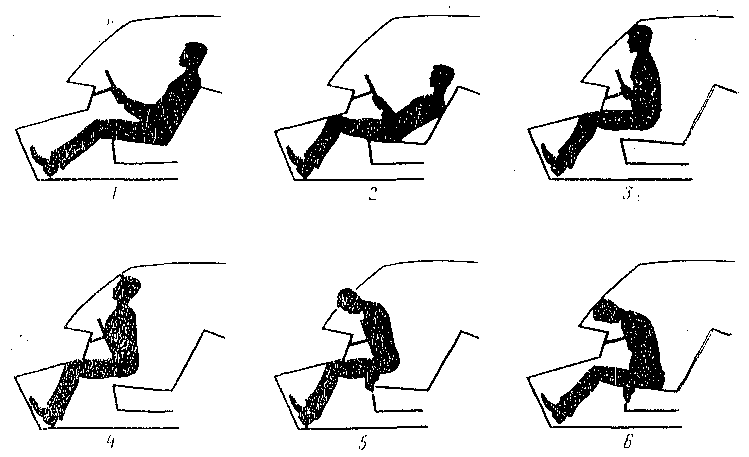The quality of the car, conditioning the safety of passengers, is determined by the vehicle's ability to absorb the impact energy in the event of a collision, that is, the ability to travel such a distance after a collision, that could reduce the forces acting on the driver and passenger within a fraction of a second after a collision. This should create such a situation. in which the driver and passengers, after the impact and immediately stopping the car, they continue to move within a split second, keeping the speed of the car moving, in the moment prior to the road accident.
 Driver's displacement during collision
Driver's displacement during collision
1, 2, 3, 4, 5, 6 - metered phases of the collision every 0,04 s.
It is during this time frame that the driver, and passengers most often suffer from fatal injuries and injuries as a result of hitting the head against the windshield or the breast against the steering wheel.
Undoubtedly, the results of the research characterizing the energy side of the car collision process are of great value. According to the data of the American company Ford, in the case of a frontal collision of cars moving with the speed from 34 into 83 km / h, the destructive energy and deformation energy varied from 625 into 4420 k.T.. Accordingly, the force crushing the front part of the car over a length of one meter was 118 — 383 kn. The front part of the car was bent due to this force, in the shape of harmony (elastic and permanent deformation over the length of 0,33 into 1,33 m). Such a deformation of the car is called telescoping.
Having, that the kinetic energy of the car before hitting an obstacle depends on the square of the value of the speed of movement, you can easily come to the conclusion, that at the initial speed 100 km/h. the consequences of the collision will be disastrous (fatal) for the people in it. This conclusion is confirmed by the results of tests of cars hitting a tree with an initial speed equal to 103 km/h, carried out at the General Motors test site. Dependence curve of lost kinetic energy, obtained by experimental method, clearly shows, that after 0,03 s from the beginning of the collision process, the destructive power of the front part of the car is achieved, value 12 500 kW. The company's engineers simply cannot imagine a "safe" car design, that would be able to absorb such tremendous energy, while guaranteeing, that the nature of its changes and the maximum deceleration value are safe for people inside the cabin.